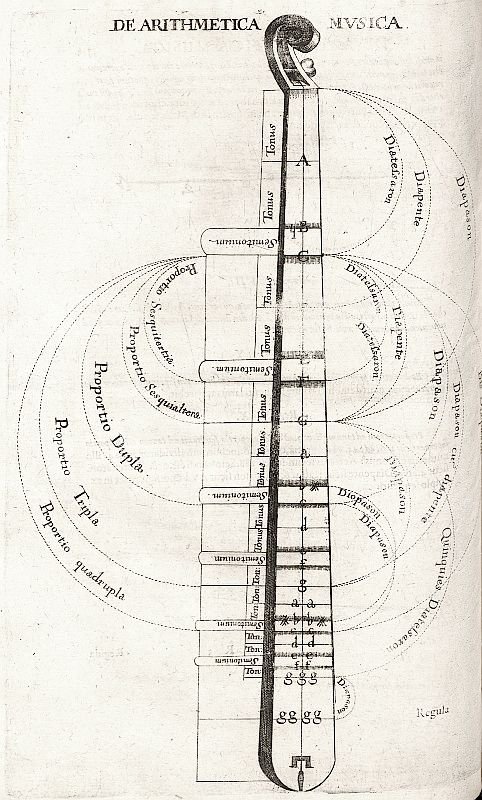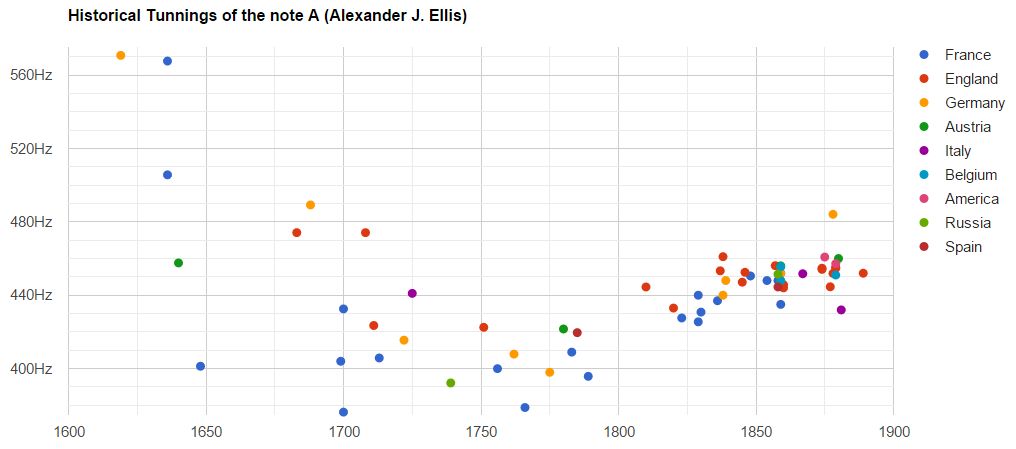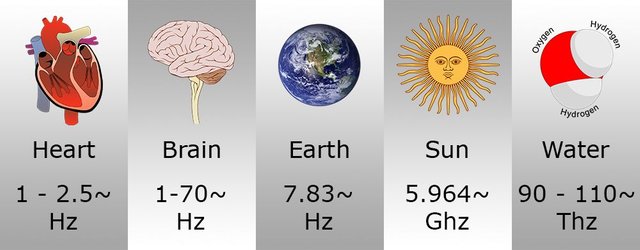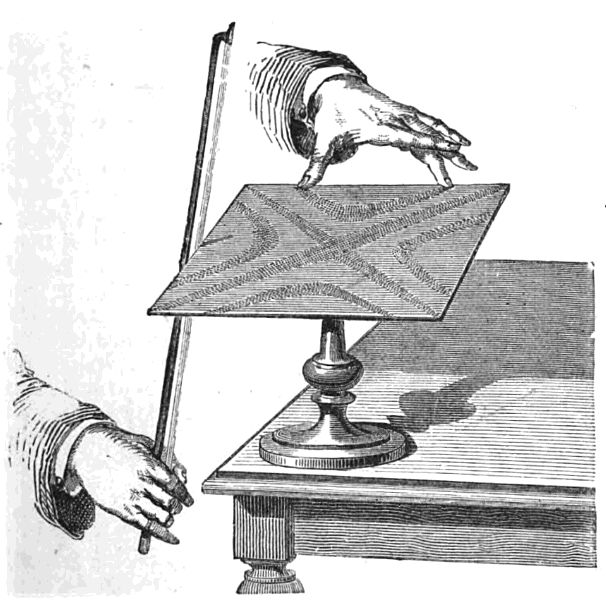432 Hz. The magic number everybody is talking about. It is said to be the natural frequency of the universe, to have cosmic healing powers and to attract masses of audience to our music. Just by tuning our music less than a semitone below our standard A=440Hz we are promised direct access to the universe's hidden treasures.
There are many articles presenting so-called “scientific evidence” in favor of 432 Hz. But how much of what are being presented with is fact, and how much of it is fiction? Let’s find out!
Fact #1
Fiction: Ancient instruments such as Tibetan bowls, Pythagoras monochord, ancient flutes, have been found to use 432 Hz as their base pitch.
Fact: Hertz is a modern term coined in 1930. Before that it was referred as “Cycles Per Second”. The first time “Cycles Per Second” could be accurately measured was in 1834, when two instruments were invented: the (remodeled) Savart Wheel by Félix Savart, and the Tonometer by Johann Scheibler.
Further than that—the measurement of Seconds has only begun during the late 16th century.
Ancient Tibetans, Pythagoras and anyone before 1834 could not have intentionally tuned their instrument to measure 432 Hz as this frequency scale simply did not exist at the time. As for evidence, I could not find a single solid evidence for ancient flutes or bowls tuned to 432 Hz. If you find some - please let me know!
Pythagoras was born 1500 years before the idea of a second was conceived.

Fact #2
Fiction: Pythagoras’ A was 432 Hz.
Fact: Pythagoras’ tuning system is ratio based. It is not based on an absolute pitch, but rather on the relations from an arbitrary reference pitch. We already know Pythagoras could not have known what a second is, so he could not know what Hz meant. Indeed 432 is a multiplication of the ratio between C and A, where C is 1 and A is 27/16 which is the same as 432/256—however this applies to any base frequency and has nothing to do with a specific Hz.
Pythagoras’s tuning system was based on cycling perfect fifths. However, cycling fifths will never get you to complete a circle—unless one of the fifths is diminished. In other words, the Pythagorean scale has to be 'tuned-down' a little each octave in order to maintain its consistency. This makes the temperament uneven and sound “off” when playing music with complex harmonies, and this is exactly the reason it was abandoned.

Fact #3
Fiction: Mozart used 432 Hz for all of his music.
Fact: The only evidence for Mozart’s A comes from an ancient tuning fork from 1780 with the tone of A=421.6 Hz. This tuning fork belonged to the Viennese piano builder Johann Andreas Stein, the leading piano maker in Vienna at the time, who was responsible for Mozart's pianos as well as Haydn’s and Beethoven’s. It is likely that they have all used A=421.6Hz.
Handel’s personal pitch fork was found 30 years earlier in England and was tuned to A=422.5Hz - pretty close to Mozart! and pretty far from 432 Hz.
Fact #4
Fiction: Verdi has used 432 Hz for all his music.
Fact: Verdi used several tunings across his life. As an opera composer he was aware of the pitch inflation (pitch standards rapidly rising to achieve a brighter orchestral sound) that was happening in his time, and was concerned it was putting a strain on singers voices as they struggle to hit the high notes on a score.
Verdi has requested his Requiem to be tuned to 435 Hz (according to the 1859 French “diapason normal” standard) and in a later letter he has expressed a slight preference for 432 Hz. Verdi is the only known composer to even hint towards 432 Hz, and it was obviously for completely different reasons than cosmic spirituality.
Fact #5
Fiction: 432 Hz is the way everybody used to tune in the past, but we have now forgotten the ancient wisdom of our ancestors.
Fact: Musicologist Alexander John Ellis has searched, measured and documented ancient pipe organs and tuning forks. Here is a graph representing his most important findings—as you can see the only mention of 432 Hz was proposed in Italy in 1880 (by Verdi), and we already know that this was done for practical reasons rather than spiritual ones. The fact is that before standardization, the pitch of A fluctuated heavily between 400 Hz and 460 Hz.

Fact #6
Fiction: 432 Hz is the frequency of the heart / brain / earth / sun / water
Fact: The frequency of the heart fluctuates between approximately 1 Hz to 2.5Hz. It does not have a steady frequency that can be multiplied to achieve 432 Hz.
Brainwaves or Neural Oscillations range between approximately 1 Hz and 70 Hz and are not tuned to 8 Hz or other divisions of 432 Hz in any way.
The Schumann resonance is a set of electromagnetic oscillations that originate from earth. One of them currently resonates at an average of 7.83Hz and not 8 Hz. which if multiplied by 55 gives us an A=430.65 Hz. Close, but no cigar.
Astronomers at Stanford have recorded super sonic oscillations from the sun at around 5.964 GHz. They had to slow them down (change their pitch) by 42,000 times to accidentally hit the frequency of 142 Hz - and not 144 as claimed by some which would again bring us a frequency of A=426Hz.
Water molecules can vibrate in a wide band of extremely high frequencies close to the infrared spectrum (90–110 Tera Hz). The band is wide enough to not favor any specific frequency, let alone 432 Hz.

Fact #7
Fiction: Goebbels and the Nazis tried to take over the world with A440Hz.
Fact: In fact, it was the British Standards Institute who arranged an international conference in London 1939 where it was internationally agreed for A=440Hz to be the standard.
Fact #8
Fiction: Cymatics—the unexplored scientific realm, provides images as proof for 432 Hz being the frequency of water/universe.
Fact: There have been several videos and images out there presenting beautiful cymatic imagery as proof for the 432 Hz theory. However these images are produced by resonant bodies (water or metal plates) which can be tuned to resonate at different frequencies.

Fact #9
Fiction: Your music will sound better at A=432Hz
Fact: Musical aesthetics is a flexible thing. Musicians are not obligated to use 440 Hz as their base frequencies, and many orchestras around the world use different pitches according to the music they are about to play. It is generally agreed that baroque music is to be played at around A 415Hz, classical and early romantic eras at around 425 Hz and later repertoire at 440 Hz and up.
Tuning to different pitches has subtle effects on the timbre of acoustic instruments, but makes no difference to electronically generated sounds.
432 Hz seems to be just another number without any special significance over others. Tuning your music to a specific frequency will not unlock cosmic powers, or make your music sound better or worse. Having said that, there is no rule or law that requires musicians to stick to the standard tuning of A=440Hz. Serious musicians should all use alternate tunings for viable reasons such as the instruments timbre and build, the musical demands and the historic background of the composition.
On a personal note, while working in Polyverse Music, I have been receiving requests to enable 432 Hz in our new plug-in “I Wish”. Even though I do not believe in 432 Hz, I do believe that musicians should be able to tune to any base frequency they like, which is why we have decided our next update will include a master tuning setting. After all, i see no reason not to tune to 432 Hz.
Have fun, create and experiment, and don’t let standards hold you back!
A strolling magician and walk around magician bring a unique, interactive touch to any event. Unlike traditional stage performances, these magicians engage with guests directly, performing close-up magic and tricks as they mingle. This format allows for a personal, immersive experience, making each interaction memorable. Whether at a wedding, corporate event, or private party, the strolling magician and walk around magician create a lively, entertaining atmosphere that captivates and charms everyone they encounter.
Downvoting a post can decrease pending rewards and make it less visible. Common reasons:
Submit